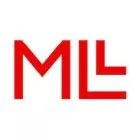- within Food, Drugs, Healthcare and Life Sciences topic(s)
- within Insurance topic(s)
- with readers working within the Banking & Credit and Insurance industries
More than two years have passed after the breakdown of negotiations between Switzerland and the European Union (hereinafter: EU), followed by the set of new European regulations with the primary objective of enhancing the safety standards for medical devices. Switzerland has had to constantly adapt its legislation in this area to align with the heightened standards imposed by the EU.
1. Background
These changes were necessary not only to guarantee patient safety, but also to ensure the continued supply and export of Swiss-made medical devices to the European Community. Since 2021, the EU has refused to recognize Swiss approvals, as our country is considered a third country by the European institutions.1
All these major reforms in the Medtech world have not only led to a drastic reduction in the number of notified bodies2, when these bodies should have increased instead, but also to an increase in waiting lines as the companies concerned had to ensure the re-certification of their existing and future equipment. Faced with this major problem, the EU took the decision in March 2023 to grant an extension (to 2027-2028) for ensuring the compliance of these medical devices.
The European Commission has continued its regulatory reforms, adopting two implementing regulations in December 2022 to improve the safety of non-medical products.
In response to these developments, the Federal Council opted to align Swiss regulations with those of the EU, subjecting them to medical devices regulations while considering the transitional periods in force within the EU. The amendments to the Ordinance on Medical Devices (hereinafter: MedDO) and the Ordinance on In Vitro Diagnostic Medical Devices (hereinafter: IvDO) came into force the 1st of November 2023. The aim of this contribution is to explain how these changes will further affect not only Swiss Medtech companies, but also their users and economic operators.
2. The influence of European law on Swiss medical device regulations
Medical device regulations are set out in numerous national and international legislative sources. These include Swiss laws and ordinances (e.g. TPA, MedDO, HRA, ClinO or IvDO), international agreements (e.g. MRA), European directives, documents interpreting these directives, harmonized technical standards and international consensus documents.3
The influence of European law in Switzerland is explained by the existing links between Switzerland and the EU in terms of product safety. Notably, half of the sales generated by Swiss medical device manufacturers are attributed to economic exports to the EU. This sector plays a substantial role, constituting nearly 4% of all Swiss exports and contributing 2.2% to Switzerland's gross domestic product.4 The Agreement of 21 June 1999 between the Swiss Confederation and the European Communitý on mutual recognition in relation to conformity assessment gave concrete form to direct access to the European market.5
The definition of medical devices given by both sets of legislation illustrates the transposition of European law into Swiss law. Council Directive 93/42/EEC of 14 June 1993 concerning medical devices (hereinafter: Directive 93/42/EEC; OJ L 169) defines the notion of medical device in art. 1 para. 2 let. a as an instrument (including software) intended by the manufacturer to be used in human beings for purposes including diagnosis, prevention, control, treatment or alleviation of disease and design control. The Therapeutic Products Act defines medical devices as products, including instruments, apparatus, in vitro diagnostics, software and other objects or substances intended for medical use, or presented as such, whose principal action is not obtained by a medicinal product.6
Beyond these aspects related to legal terminology, Swiss law even refers for certain aspects directly to Directive 93/42/EEC.7 This Directive was recently repealed by Regulation [EU] No 2017/745 of the European Parliament and of the Council of 5 April 2017 concerning medical devices, which came into force on 26 May 2017.8
In response to this evolution in European regulations, Swiss law has been progressively adapting to incorporate the provisions of the new regulation. This proactive approach aims to preemptively address potential technical barriers to trade between Switzerland and the EU, reflecting the ongoing commitment to harmonizing standards and facilitating seamless commerce between the two entities.9
3. Legislative changes for non-medical medical devices
3.1 Products involved
On 1 December 2022, two European implementing regulations (2022/2346 and 2022/2347), incorporated into the MedDO by the Federal Council on 1 November 2023, tightened the requirements applicable to groups of non-medical products that are similar to medical devices in terms of function and risk profile.
According to Annex 1 MedDO, products without an intended medical purpose are products that do not fulfil a medical purpose but which, from a patient safety perspective present a risk to humans comparable to the risk presented by medical devices. Accordingly, these products must fulfil essentially the same general safety and performance requirements as medical devices.
There are six groups of non-medical products:
- Contact lenses or other items intended to be introduced into the eye.
- Products intended to be totally or partially introduced into the human body through surgically invasive means for the purpose of modifying the anatomy or fixation of body parts with the exception of tattooing products and piercings.
- Substances, combinations of substances or items intended to be used for facial or other dermal or mucous membrane filling by subcutaneous, submucous or intradermal injection or other introduction, excluding those for tattooing.
- Equipment intended to be used to reduce, remove or destroy adipose tissue, such as equipment for liposuction, lipolysis and lipoplasty.
- High intensity electromagnetic radiation (e.g. infrared, visible light, ultraviolet) emitting equipment intended for use on the human body, including coherent and non-coherent sources, monochromic and broad-spectrum light such as lasers and intense pulsed light equipment for skin resurfacing, tattoo or hair removal or other skin treatment.
- Equipment intended for brain stimulation that applies electric currents or electromagnetic fields that penetrate the cranium to modify neuronal activity in the brain.
The reclassification of certain active non-medical products in implementing regulation (EU) 2022/2347 is taken into account in art. 15 and Annex 5a MedDO by reference to implementing regulation (EU) 2022/2347.
As a result, these products must in principle meet the same general safety and performance requirements as medical devices.
3.2. Practical consequences
With this reform, products belonging to the non-medical groups listed in Annex 1 MedDO will also have to bear a conformity process10 and carry a declaration of conformity.11 Manufacturers of products covered by Annex 1 MedDO will thus have to carry out a conformity assessment procedure.
Only when this procedure has been completed can a declaration of conformity be drawn up and a CE mark affixed to products.12The differences with the requirements for medical devices are described in the Common Specifications (i.e. Annexes I to VII of Implementing Regulation (EU) 2022/2346), which were designated on 1 November 2023).13
With the entry into force of the revised MedDO on 1 November 2023, two options will be open for marketing products that fall under Annex 1 MedDO:
- Products that fall under Annex 1 MedDO fulfil the common specifications adopted by Swissmedic in accordance with Art. 45 para. 4 TPA (Art. 8 para. 1 MedDO) and are thus placed on the market under the new legislation. These devices must fulfil all requirements of MedDO before they are placed on the market. In this case, Swissmedic is responsible for market surveillance.
- Products that fall under Annex 1 MedDO can continue to be placed on the market or put into service under the existing legislation up to the dates specified in Art. 106 MedDO provided the conditions set out in Art. 106 MedDO are fulfilled.
3.3 Extended transition deadlines and implementation
In line with the extended transition deadlines adopted on 20 March 2023 for medical devices, the Implementing Regulation ((EU) 2023/1194 of the Commission of 20 June 2023) also grants a longer deadline for the transition from the current law to the law on medical devices for the product groups with no medical purpose listed in Annex XVI RDM-UE. Under the transitional provisions in Art. 106 para. 2 to 6 MedDO, it will be possible to market devices in the product groups listed in Annex 1 MedDO without any restriction until 1 May 2024 under the existing sector-specific legislation.
For the transition periods to apply to a product covered by Annex 1 MedDO, the product must i) already have been legally marketed in Switzerland prior to 1 May 2024, ii) must continue to comply with applicable legislation, and iii) must not have been substantially changed.14
Compliance with the general safety and performance requirements under Art. 6 MedDO is demonstrated by means of a clinical evaluation.15 This must be based on relevant clinical data relating to performance and safety16 and must meet the requirements of the common specifications. These clinical data must include information from post-marketing surveillance, post-marketing clinical follow-up and, where appropriate, data from specific clinical investigations.
Swissmedic's checklist distinguishes between two situations:
1) If a manufacturer is planning a clinical investigation to obtain clinical data for the clinical evaluation, products may be placed on the market or put into service under the existing legislation until 31 December 2029 provided the following additional requirements are met:
- From 1 November 2024, the study sponsor must have received confirmation from the responsible authority that the application for a clinical study is complete and falls under MedDO.
- From 2 May 2025, the study sponsor must have initiated the clinical investigation.
- From 1 January 2028, a written agreement on the performance of the conformity assessment must exist between the manufacturer and a designated body.
2) If a manufacturer is not planning a clinical investigation, products may be placed on the market or put into service under the existing legislation until 31 December 2028 provided the following additional requirements are met:
- From 1 January 2027, a written agreement on the performance of the conformity assessment must exist between the manufacturer and a designated body.
If these conditions are fulfilled, the products may still be placed on the market in Switzerland under the existing legislation up to the dates given. The competent national or cantonal authority remains responsible for the market surveillance of products that were marketed on the basis of the transitional provisions.
Once the transitional deadlines have passed or if a manufacturer fails to comply with the transitional provisions, any device that falls under Annex 1 MedDO may only be placed on the market, made available on the market or put into service if it has successfully completed the conformity assessment procedure under MedDO and if it carries a corresponding CE mark.
4. Conclusion
For users of these products, the first step is to determine the date on which they were placed on the market (not to be confused with the date on which the product was marketed). Products placed on the market, put into service and used before 1 November 2023 are not affected by the updated version of the Ordinance. They are permitted to be used until the end of their life cycle, provided the manufacturer does not question their conformity and safety.
Unless importers and distributors meet the conditions set out in art. 106 MedDO during the transitional period, they will henceforth have to ensure that they place or make available on the market MedDO-compliant products. These products are subject to a conformity assessment procedure in line with the RDM-UE, as explicitly referenced by the MedDO.
In the future, economic operators will be subject to the same obligations as medical devices when placing and making available on the market the products listed in Annex 1 MedDO.
MLL Legal is aware of the important but complex reforms in this domain and is ready to offer assistance and address any additional inquiries on this matter.
Footnotes
1 Triebe Benjamin, NZZ, Das EU-Chaos bei Medtech-Zulassungen sorgt für Engpässe in der Schweiz.
2 A notified body is an organisation designated by an EU country to assess the conformity of certain products before being placed on the market. These bodies carry out tasks related to conformity assessment procedures set out in the applicable legislation, when a third party is required. The European Commission publishes a list of such notified bodies.
3 Donzallaz Yves, Traité de droit médical, Volume I, Stämplfi, p. 339.
4 Export volume: CHF 10.6 billion, cf. Explanatory report by the Federal Department of Home Affairs on the amendment of the Therapeutic Products Act (new regulations on medical devices) and the Federal Act on Technical Barriers to Trade, March 2018, p. 3.
5 Mutual Recognition Agreements [MRA], an integral part of Bilateral Agreements I, RS 0.946.526.81.
6 Art. 4 al. 1 lit. b LPTh clarified by art. 1 al. 1 MedDo.
7 E.g.: essential requirements, art. 4 al. 1 lit. a MedDo.
8 Regulation EU 2017/745; OJ L 117.
9 Explanatory report by the Federal Department of Home Affairs on the amendment of the Therapeutic Products Act (new regulations on medical devices) and the Federal Act on Technical Barriers to Trade, March 2018, p. 4.
10 Art. 13 MedDo.
11 Art. 21 MedDO.
12 Swissmedic, Products without an intented medical purpose, p. 10.
13 Swissmedic, Products without an intented medical purpose, p. 10.
14 Swissmedic, Products without an intented medical purpose, p. 7.
15 Art. 61 RDM-EU in conjunction with art. 21 MedDO.
16 Art. 6, para. 2 MedDO.
The content of this article is intended to provide a general guide to the subject matter. Specialist advice should be sought about your specific circumstances.
[View Source]


